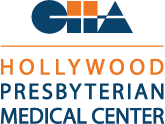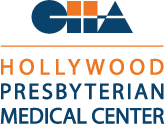|
Glaucoma surgeons often use laser peripheral iridotomy (ear-id-dot-toe-me) or LPI to treat eye pressure symptoms from closed-angle glaucoma. In closed-angle glaucoma, the angle between the iris (colored part of the eye) and cornea (the clear covering over the eye) is too small or closed off. This lack of space for fluid drainage increases internal eye pressure that can damage the optic nerve and cause vision loss or blindness. LPI is used to slow vision loss or, if detected early, to prevent damage before it occurs. During LPI, the glaucoma surgeon aims a laser beam along the edge of the iris to increase the angle or open up closed portions. This creates a space for fluid to flow through and lowers eye pressure. What to Expect During a Laser Peripheral Iridotomy (LPI)An LPI can be done any glaucoma clinic that has glaucoma experts and the right kind of laser equipment. You do not have to stay overnight, but will need someone to drive you home. First, your care team at the eye clinic puts drops in your eye to decrease the size of the pupil (the opening in your iris that lets in light). This is followed by drops that numb the eye just before the procedure. Then the glaucoma surgeon places a special lens on your eye and aims the laser to where treatment is needed. The laser flashes with green or red light for just a few moments. A series of pulses are used over five to ten minutes. Most people feel little or no pain when the laser is used. Some say it feels like a pinprick. Others may have a slight headache for a few minutes. Afterwards, your eye may feel sore, be more sensitive to light, and your vision may be blurry for a short time. Your doctor will give you eyedrops that lower pain and help healing. Your surgeon will schedule a follow up appointment to see if your eye pressure has decreased enough. Be sure to return for the appointment because glaucoma management through medication and procedures is the only way to prevent more damage and save your eyesight. During glaucoma management, your treatment may include changing your glaucoma medications, having additional laser surgery, or having glaucoma surgery. A variety of advanced glaucoma treatments also have been approved or are in testing. You are most likely to find them at a glaucoma center of excellence. In our next blog, we discuss endoscopic laser surgery. The goal of this series of weekly blogs is to help you feel informed and confident, wherever you are in learning about glaucoma. Visit sceyes.org/blog weekly to learn more. Please provide feedback, suggested topics, or questions about glaucoma in the Contact Us section below. Thank you. |
 ENGLISH
ENGLISH  РУССКИЙ
РУССКИЙ 


